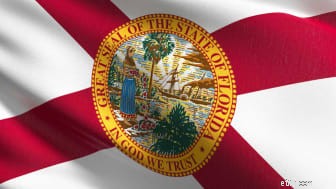
Takket være COVID-19-pandemien har millioner af amerikanere fået et uønsket lynkursus i det amerikanske arbejdsløshedskompensationssystem. Der er mange almindelige spørgsmål fra folk, der søger dagpenge for første gang. Hvordan ansøger jeg om ydelser? Hvor meget får jeg? Hvor længe varer fordelene? Folk har brug for svar på disse spørgsmål med det samme. Men når først du begynder at modtage betalinger, vil der sandsynligvis dukke et andet spørgsmål op:Skal jeg betale skat af mine dagpenge?
Når det kommer til føderale indkomstskatter, er det generelle svar ja. Onkel Sam beskatter arbejdsløshedsunderstøttelse, som om de var løn (selvom op til 10.200 USD i arbejdsløshedserstatning modtaget i 2020 er fritaget fra føderal skat for personer med en justeret bruttoindkomst under 150.000 USD ). Men når det kommer til statens indkomstskatter, afhænger det af, hvor du bor. De fleste stater beskatter fuldt ud arbejdsløshedsunderstøttelse. Men nogle stater beskatter dem slet ikke (nogle gange fordi staten ikke har en indkomstskat), og en håndfuld stater vil kun beskatte en del af dine fordele. Plus, ligesom den føderale regering, gør nogle stater særlige undtagelser fra deres generelle regel for 2020 og/eller 2021 for at hjælpe folk, der mistede deres job på grund af pandemien.
Hvor står din stat, når det kommer til beskatning af arbejdsløshedsunderstøttelse? Læs videre for at finde ud af det. Vi vil også fortælle dig, hvilke stater der har udstedt vejledning om, hvordan de vil håndtere den føderale $10.200-fritagelse for arbejdsløshedserstatning modtaget i 2020. Så skitserer vi som en bonus hver stats indkomst-, salgs- og ejendomsskatteniveauer — og giv et link til statens side i vores stat-for-stat guide til skat på middelklassefamilier - så du kan få en fornemmelse af den samlede skattebyrde, hvor du bor.

Statsskatter på arbejdsløshedsunderstøttelse: Alabama beskatter ikke arbejdsløshedsunderstøttelse. Derudover er arbejdsløshedskompensation ydet gennem den føderale CARES Act og efterfølgende forlængelser fritaget for enhver statslig, amtslig eller kommunal indkomstskat for skatteårene 2020 og 2021.
De første 50.000 kroner modtaget fra en arbejdsgiver som fratrædelsesgodtgørelse, dagpenge og lignende som følge af "administrativ nedskæring" beskattes heller ikke.
Statens indkomstskat interval: Lav: 2 % (på op til 1.000 USD af skattepligtig indkomst for gifte fællesregistratorer og op til 500 USD for alle andre). Høj: 5 % (på mere end 6.000 USD af skattepligtig indkomst for gifte fællesregistratorer og mere end 3.000 USD for alle andre). Nogle Alabama-kommuner pålægger også erhvervsskatter på lønninger og lønninger.
Salgsafgift: 4 % statsafgift. Lokaliteter kan lægge så meget som 7,5 % til det, og den gennemsnitlige samlede sats er 9,22 % ifølge Skattefonden.
Ejendomsskatter: I Alabama er den gennemsnitlige ejendomsskattesats $395 pr. $100.000 af vurderet boligværdi.
For flere oplysninger, gå til Alabama State Tax Guide for Middle-Class Families .

Statsskatter på arbejdsløshedsunderstøttelse: Alaska beskatter ikke arbejdsløshedserstatning.
Statens indkomstskat interval: Der er ingen statslig indkomstskat.
Salgsafgift: Alaska er en af fem stater uden stat moms. Lokaliteter kan dog opkræve salgsafgifter, som kan gå op til 7,5 %. Men ifølge Skattefonden er det landsdækkende gennemsnit kun 1,76%.
Ejendomsskatter: I Alaska er den gennemsnitlige ejendomsskattesats $1.182 pr. $100.000 af vurderet boligværdi.
Du kan få flere oplysninger ved at gå til Alaska State Tax Guide for Middle-Class Families.

Statsskatter på arbejdsløshedsunderstøttelse: Arizona beskatter generelt arbejdsløshedserstatning i samme omfang, som den beskattes i henhold til føderal lov. Staten vedtog også den føderale fritagelse for op til $10.200 i arbejdsløshedserstatning modtaget i 2020. Skatteydere, der modtog arbejdsløshedsunderstøttelse i 2020 og indsendte en Arizona-skatteangivelse for 2020 før den 11. marts 2021, skal ændre deres Arizona-afkast for at modtage en refusion af Arizona indkomstskat, de har betalt for meget. Skatteydere, der indgav en Arizona-angivelse efter den 11. marts 2021, har højst sandsynligt allerede modtaget fordelen af fritagelsen og bør ikke indsende en ændret Arizona-angivelse. Men uanset hvornår de indgav en Arizona-angivelse, bør skatteydere, der modtog en føderal indkomstskat-refusion af arbejdsløshedsunderstøttelse fra IRS, ændre deres Arizona-angivelse for 2020.
Statens indkomstskat interval: Lavt: 2,59 % (på op til 54.615 USD af skattepligtig indkomst for fælles arkivere og op til 27.808 USD for enlige registre). Højt: 4,5 % (på skattepligtig indkomst over 500.000 USD for fælles registre og over 250.000 USD for enlige skatteydere).
Fra og med 2021 vil Arizona pålægge en 3,5 % tillægsskat på skattepligtig indkomst over 500.000 USD for fælles ansøgere og over 250.000 USD for enlige skatteydere. Tillægsskatten kan dog ikke øge den samlede topsats over 4,5 % (den ovenfor nævnte 4,5 %-sats inkluderer tillægsskatten). Derudover bliver tillægsskatten anfægtet ved domstolene, så der er en chance for, at den i sidste ende slet ikke vil blive anvendt, hvis domstolene slår den ned.
Begyndende i 2022 vil en skattesatsstruktur med to parenteser blive vedtaget. Satserne vil være 2,55 % (på op til 54.544 USD af skattepligtig indkomst for fælles arkivere og op til 27.272 USD for enlige arkivere) og 2,98 % (på over 54,54 USD af skattepligtig indkomst for fælles arkivere og på over 27.272 USD af skattepligtig indkomst for enlige arkivere) ). Satserne vil falde til henholdsvis 2,53 % og 2,75 %, hvis visse statens indtægtsbeløb nås. Staten vil derefter vedtage en enkelt fast sats på 2,5 %, hvis et andet statsindtægtsbeløb nås.
Salgsafgift: 5,6 % statsafgift. Lokaliteter kan lægge så meget som 5,6 % til det, men den gennemsnitlige samlede afgift er 8,4 % ifølge Skattefonden.
Ejendomsskatter: Arizonas gennemsnitlige ejendomsskattesats er $617 pr. $100.000 af vurderet boligværdi.
Du kan få flere oplysninger ved at gå til Arizona State Tax Guide for Middle-Class Families.

Statsskatter på arbejdsløshedsunderstøttelse: Arkansas beskatter normalt arbejdsløshedsunderstøttelse. Dog er dagpenge udbetalt i 2020 og 2021 fritaget for skat.
Statens indkomstskat interval: Lav: 2 % (på skattepligtig indkomst fra 4.800 USD til 9.499 USD for skatteydere med en nettoindkomst på mindre end 23.600 USD), 0,75 % (på første 4.799 USD af skattepligtig indkomst for skatteydere med en nettoindkomst fra 23.600 USD til 84.500 USD) eller 2 % (på 4.799 USD på første 300 USD) af skattepligtig indkomst for skatteydere med nettoindkomst over 84.500 USD). Høj: 3,4 % (af skattepligtig indkomst fra $14.300 til $23.599 for skatteydere med en nettoindkomst på mindre end $23.600), 5,9 % (ved skattepligtig indkomst fra $39.700 til $84.500 for skatteydere med en nettoindkomst fra $23.600 til $84, % af skattepligtig indkomst) over 8.500 USD for skatteydere med en nettoindkomst over 84.500 USD).
Fra og med 2022 vil satsen på 2 % gælde for nettoindkomst på $5.000 til $9.999 for personer med en nettoindkomst på $84.500 eller mindre og for de første $4.300 af nettoindkomsten for personer med en nettoindkomst på over $84.500. Den højeste sats falder til 5,5 % og gælder for en nettoindkomst på 39.700 til 84.500 USD for personer med en nettoindkomst på 84.500 USD eller derunder og for nettoindkomsten over 8.500 USD for personer med en nettoindkomst på over 84.500 USD.
Fra og med 2023 reduceres topsatsen igen til 5,3 %. Hvis der ikke overføres midler fra statens katastrofale reservefond på bestemte datoer, vil toprenten falde igen til 5,1 % for 2024 og til 4,9 % for 2025 og derefter.
Salgsafgift: 6,5 % statsafgift. Lokaliteter kan tilføje så meget som 6,125 %, og den gennemsnitlige samlede sats er 9,48 % ifølge Skattefonden.
Ejendomsskatter: Den gennemsnitlige ejendomsskattesats for husejere i Arkansas er 612 USD pr. 100.000 USD af vurderet boligværdi.
Du kan få flere oplysninger ved at gå til Arkansas State Tax Guide for Middle-Class Families.

Statsskatter på arbejdsløshedsunderstøttelse: Californiere skal ikke betale statsindkomstskat på arbejdsløshedsunderstøttelse.
Som et resultat af den føderale fritagelse på 10.200 USD for arbejdsløshedserstatning modtaget i 2020, behøver folk, der indgav en Californisk selvangivelse for 2020 før den 11. marts, krævede Californiens indkomstskattefradrag (CalEITC) og rapporterede arbejdsløshedsindkomster, ikke at gøre noget for at rette deres californiske tilbagevenden. Staten vil foretage de nødvendige ændringer og sende enhver deraf følgende skatterefusion fra staten begyndende i august 2021. Derudover kræves der ingen handling, hvis du indsender din Californiske selvangivelse for 2020 efter den 11. marts, gør krav på CalEITC og indberetter arbejdsløshedsindkomst.
Hvis du indsendte en Californisk selvangivelse for 2020, ikke gjorde krav på CalEITC, rapporterede arbejdsløshedsindkomst og rapporterede en føderal AGI på mindre end $40.201 (enkelt) eller $50.401 (gift indgiver i fællesskab), så se om du er kvalificeret til CalEITC. Hvis du gør det, skal du sende en mail på formularen FTB 3514. Du behøver ikke at ændre din selvangivelse i Californien.
Statens indkomstskat interval: Lavt: 1 % (på op til 17.864 USD af skattepligtig indkomst for gifte fællesregistratorer og op til 8.932 USD for dem, der ansøger individuelt). Høj: 13,3 % (på mere end 1.198.024 USD for gifte samlere og 1 million USD for dem, der ansøger individuelt).
For 2021 gælder satsen på 1 % for de første $18.650 i skattepligtig indkomst for fælles filialer og de første $9.325 af skattepligtig indkomst for enlige filer. Satsen på 13,3 % gælder for skattepligtig indkomst på 1.250.738 USD eller mere for fælles ansøgere og 1 million USD eller mere for enlige registre.
Salgsafgift: 7,25 % statsafgift. Lokaliteter kan tilføje så meget som 2,5 %, og den gennemsnitlige samlede sats er 8,82 %, ifølge Skattefonden.
Ejendomsskatter: I Californien er den gennemsnitlige ejendomsskattesats $729 pr. $100.000 af vurderet boligværdi.
Du kan få flere oplysninger ved at gå til California State Tax Guide for Middle-Class Families.

Statsskatter på arbejdsløshedsunderstøttelse: Colorado beskatter alle arbejdsløshedsunderstøttelse.
Når du udfylder din 2020 Colorado selvangivelse, skal du tilføje beløbet for enhver arbejdsløshedserstatning, der er udelukket fra din føderale skattepligtige indkomst i henhold til American Rescue Plan Act. Dette beløb skal føjes til linje 6 (andre tilføjelser) i din Colorado-retur, sammen med eventuelle andre tilføjelser, der kræves af loven. I forklaringsfeltet skal du indtaste "Arbejdsløshedserstatning."
interval for indkomstskat: Colorado har en flad indkomstskattesats på 4,55 % (godkendelsen af Proposition 116, som fremkom ved afstemningen i november 2020, reducerede satsen fra 4,63 % til 4,55 %). Staten begrænser også, hvor meget dens indtægter kan vokse fra år til år ved at sænke skattesatsen, hvis indtægtsvæksten er for høj. For eksempel resulterede dette i 2019 i en satsnedsættelse til 4,5 %. Denver og et par andre byer i Colorado pålægger også en månedlig lønskat.
Salgsafgift: 2,9 % statsafgift. Lokaliteter kan tilføje så meget som 8,3 %, og den gennemsnitlige samlede sats er 7,72 %, ifølge Skattefonden.
Ejendomsskatter: I Colorado er den gennemsnitlige ejendomsskattesats $494 pr. $100.000 af vurderet boligværdi.
Du kan få flere oplysninger ved at gå til Colorado State Tax Guide for Middle-Class Families.

Statsskatter på arbejdsløshedsunderstøttelse: Connecticut beskatter arbejdsløshedserstatning i samme omfang, som den beskattes i henhold til føderal lov. Som følge heraf er enhver arbejdsløshedserstatning modtaget i 2020 (op til $10.200) fritaget for føderal indkomstskat ikke underlagt Connecticut-indkomstskat. Hvis du allerede har indsendt dine føderale og Connecticut-afkast, og du er forpligtet til at ændre din føderale returnering, skal du ændre din Connecticut-afkast ved at indsende formular CT-1040X ved at bruge den føderale AGI, du rapporterede på din ændrede føderale returnering. Hvis du ikke er forpligtet til at ændre dit føderale afkast (dvs. du forventer, at IRS vil genberegne dit afkast automatisk), skal du ikke ændre dit Connecticut-afkast på nuværende tidspunkt. Staten venter på mere vejledning fra IRS om, hvordan genberegninger vil blive rapporteret til skatteydere og statslige skattemyndigheder.
Statens indkomstskat interval: Lavt: 3 % (på op til 20.000 USD af skattepligtig indkomst for gifte fællesregistratorer og op til 10.000 USD for dem, der ansøger individuelt). Højt: 6,99 % (af beløbet over 1 mio. USD for gifte fællesansøgere og over 500.000 USD for dem, der ansøger individuelt).
Salgsafgift: Staten beskatter de fleste varer med 6,35 %, og lokaliteter må ikke lægge dertil.
Ejendomsskatter: Den gennemsnitlige ejendomsskattesats for beboere i Connecticut er 2.139 USD pr. 100.000 USD af vurderet boligværdi.
Du kan få flere oplysninger ved at gå til Connecticut State Tax Guide for Middle-Class Families.

Statsskatter på arbejdsløshedsunderstøttelse: Arbejdsløshedserstatning beskattes normalt i Delaware. Dagpenge modtaget i 2020 er dog fritaget for skat.
Statens indkomstskat interval: Lav: 2,2 % (ved skattepligtig indkomst fra 2.001 USD til 5.000 USD). Høj:Høj:6,6 % (ved skattepligtig indkomst over 60.000 USD). Wilmington pålægger også en byskat på lønninger.
Salgsafgift: Hverken staten eller kommunerne pålægger en salgsafgift.
Ejendomsskatter: For Delaware-husejere er den gennemsnitlige ejendomsskattesats $562 per $100.000 af vurderet boligværdi.
Du kan få flere oplysninger ved at gå til Delaware State Tax Guide for Middle-Class Families.

Statsskatter på arbejdsløshedsunderstøttelse: Fra og med 2021 beskatter District of Columbia (Washington, D.C.) ikke arbejdsløshedsunderstøttelse.
Byen har vedtaget den føderale fritagelse på op til $10.200 for arbejdsløshedserstatning modtaget i 2020. Skatteydere, der har indgivet en original 2020 DC selvangivelse uden at indberette arbejdsløshedsudelukkelsen, bør indsende en ændret opgørelse baseret på deres ændrede føderale justerede bruttoindkomst.
Statens indkomstskat interval: Lav: 4 % (ved skattepligtig indkomst op til 10.000 USD). Høj: 8,95 % (ved skattepligtig indkomst over 1 million USD). Fra og med 2022 vil den højeste sats være 10,75 % på skattepligtig indkomst over 1 million USD.
Salgsafgift: 6 % byomsætningsafgift.
Ejendomsskatter: I District of Columbia er den gennemsnitlige ejendomsskattesats 564 USD pr. 100.000 USD af vurderet boligværdi.
Du kan få flere oplysninger ved at gå til District of Columbia Tax Guide for Middle-Class Families.

Statsskatter på arbejdsløshedsunderstøttelse: Der er ingen skat på arbejdsløshedsunderstøttelse i Florida.
Statens indkomstskat interval: Der er ingen statslig indkomstskat.
Salgsafgift: 6 % statsafgift. Lokaliteter kan tilføje så meget som 2 %, og den gennemsnitlige samlede sats er 7,01 %, ifølge Skattefonden.
Ejendomsskatter: I Florida er den gennemsnitlige ejendomsskattesats $830 for hver $100.000 af vurderet boligværdi.
Du kan få flere oplysninger ved at gå til Florida State Tax Guide for Middle-Class Families.

Statsskatter på arbejdsløshedsunderstøttelse: Georgien beskatter arbejdsløshedsunderstøttelse.
Staten har ikke vedtaget den føderale fritagelse for op til $10.200 i arbejdsløshedserstatning modtaget i 2020. Enhver arbejdsløshedsindkomst, der var udelukket på en skatteyders føderale opgørelse, skal tilføjes tilbage på Georgia Form 500, skema 1, linje 5.
Statens indkomstskat interval: Lavt: 1 % (på de første $1.000 af skattepligtig nettoindkomst for ægtepar, der ansøger i fællesskab; på de første $750 for individuelle ansøgere; og på de første $500 for gifte par, der ansøger separat). Høj: 5,75 % (på de første $1.000 af skattepligtig nettoindkomst for ægtepar, der ansøger i fællesskab; på de første $750 for individuelle ansøgere; og på de første $500 for gifte par, der ansøger separat).
Salgsafgift: 4 % statsafgift. Lokaliteter kan tilføje så meget som 4,9 %, og den gennemsnitlige samlede sats er 7,33 %, ifølge Skattefonden.
Ejendomsskatter: Georgias gennemsnitlige ejendomsskattesats er $875 pr. $100.000 af vurderet boligværdi.
Du kan få flere oplysninger ved at gå til Georgia State Tax Guide for Middle-Class Families.

Statsskatter på arbejdsløshedsunderstøttelse: Arbejdsløshedsunderstøttelse beskattes fuldt ud på Hawaii.
Hawaii Department of Taxation er ikke i stand til at give nogen endelig vejledning om vedtagelse af den føderale fritagelse for de første $10.200 i arbejdsløshedserstatning modtaget i 2020, indtil statens lovgiver har vedtaget enhver relateret lovgivning.
Statens indkomstskat interval: Lav: 1,4 % (på skattepligtig indkomst op til 4.800 USD for ægtepar, der ansøger i fællesskab; på op til 2.400 USD for ægtepar, der ansøger separat og individuelle ansøgere). Høj: 11 % (af skattepligtig indkomst over 400.000 USD for ægtepar, der ansøger i fællesskab og efterlevende ægtefæller; på over 200.000 USD for ægtepar, der ansøger separat og individuelle ansøgere).
Salgsafgift: 4 % statsafgift. Lokaliteter kan tilføje så meget som 0,5 %, men den gennemsnitlige samlede sats er kun 4,44 % ifølge Skattefonden.
Ejendomsskatter: Den gennemsnitlige ejendomsskattesats på Hawaii er $280 pr. $100.000 af vurderet boligværdi.
Du kan få flere oplysninger ved at gå til Hawaii State Tax Guide for Middle-Class Families.

Statsskatter på arbejdsløshedsunderstøttelse: Idaho beskatter typisk arbejdsløshedsunderstøttelse i samme omfang, som de beskattes på føderalt niveau. Dog skal alle 2020-arbejdsløshedsydelser, der er ekskluderet til føderale skatteformål på formular 1040, skema 1, linje 8, føjes tilbage til din Idaho-indkomst selvangivelse. Hvis du indgiver Idaho Form 40, skal du rapportere den udelukkede indkomst på Form 39R, Part A, linje 6, "Andre tilføjelser." Hvis du indgiver Idaho Form 43, skal du ikke inkludere den føderale udelukkelse af arbejdsløshedskompensation på linje 19, "Anden indkomst." Rapporter det i stedet på formular 39NR, del A, linje 4, kolonne A, "Andre tilføjelser."
Statens indkomstskat interval: Lavt: 1 % (på skattepligtig indkomst op til 3.176 USD for gifte fællesregistratorer og op til 1.588 USD for individuelle registre). Høj: 6,5 % (ved skattepligtig indkomst på 15.878 USD eller mere for gifte fællesregistratorer og 7.939 USD eller mere for individuelle arkivere).
Salgsafgift: 6 % statsafgift. Lokaliteter (typisk feriesteder) kan tilføje så meget som 3 %, men den gennemsnitlige samlede sats er kun 6,02 %, ifølge Skattefonden.
Ejendomsskatter: I Idaho er den gennemsnitlige ejendomsskattesats 633 USD pr. 100.000 USD af vurderet boligværdi.
Du kan få flere oplysninger ved at gå til Idaho State Tax Guide for Middle-Class Families.

Statsskatter på arbejdsløshedsunderstøttelse: Illinois beskatter generelt fuldt ud arbejdsløshedserstatning. Staten har dog vedtaget den føderale skattefritagelse på 10.200 $ for 2020 arbejdsløshedsunderstøttelse. Hvis du indgav din 2020 Illinois selvangivelse elektronisk før den 15. marts 2021, behøver du ikke at gøre noget. Illinois Department of Revenue burde automatisk have opdateret din justerede bruttoindkomst (AGI) og sendt den nødvendige refusion. Hvis du indsendte dit afkast på papir eller indsendt elektronisk efter den 14. marts 2021 og ikke rapporterede arbejdsløshedsudelukkelsen på din føderale indberetning, skal du indsende en ændret angivelse ved hjælp af formular IL-1040-X og inkludere en proforma føderal formular 1040 og skema 1, der viser genberegningen af din AGI. Skriv "Arbejdsløshedsudelukkelse" øverst på formular IL-1040-X.
Statens indkomstskat interval: Der er en fast sats på 4,95 % af føderalt justeret bruttoindkomst efter ændringer og personlige fritagelser.
Salgsafgift: 6,25 % statsafgift. Lokaliteter kan tilføje så meget som 4,75 %, og den gennemsnitlige samlede sats er 8,83 %, ifølge Skattefonden.
Ejendomsskatter: I Illinois er den gennemsnitlige ejendomsskattesats 2.165 USD pr. 100.000 USD af vurderet boligværdi.
Du kan få flere oplysninger ved at gå til Illinois State Tax Guide for Middle-Class Families.

Statsskatter på arbejdsløshedsunderstøttelse: Selvom arbejdsløshedsunderstøttelse er skattepligtig i Indiana, kan en del af dine ydelser være fradragsberettigede. Det fradragsberettigede beløb afhænger af din føderale justerede bruttoindkomst, hvor meget arbejdsløshedserstatning du modtager, og din ansøgningsstatus. Udfyld "Arbejdsarket for arbejdsløshedskompensation" i Form IT-40 instruktionshæftet for at beregne det nøjagtige beløb for dit fradrag.
Den føderale fritagelse for op til $10.200 af arbejdsløshedserstatning modtaget i 2020 gælder ikke i Indiana. Derfor skal et beløb, der er ekskluderet til føderale indkomstskatteformål, tilføjes tilbage, når du indgiver din Indiana-indkomstskatteangivelse.
Indiana vil give afkald på renter og bøder på enhver skyldig skat som følge af undladelse af at inkludere nogen 2020-arbejdsløshedserstatning i Indiana justeret bruttoindkomst, hvis beløbet blev udelukket til føderale indkomstskatteformål. Der frafaldes dog ikke renter på beløb, der forfalder efter den 30. september 2021.
Statens indkomstskat interval: Hoosier-staten har en fast sats på 3,23% af statens justerede bruttoindkomst efter ændringer. Amter opkræver også indkomstskat.
Salgsafgift: 7 % statsafgift. Ingen lokale skatter.
Ejendomsskatter: Den gennemsnitlige ejendomsskattesats for husejere i Indiana er $810 pr. $100.000 af vurderet boligværdi.
Du kan få flere oplysninger ved at gå til Indiana State Tax Guide for Middle-Class Families.

Statsskatter på arbejdsløshedsunderstøttelse: Arbejdsløshedsydelser er generelt fuldt skattepligtige i Iowa. Staten vedtager dog den føderale fritagelse på 10.200 USD for arbejdsløshedserstatning modtaget i 2020. Iowa Department of Revenue vil foretage automatiske justeringer for personer, der allerede har indgivet en Iowa-indkomstskatteangivelse for 2020. Som følge heraf behøver skatteyderne ikke at indsende en ændret Iowa selvangivelse, hvis deres eneste justering vedrører arbejdsløshedskompensation. Personer, der indsender en original 2020 Iowa selvangivelse, bør indberette udelukkelsesbeløbet for arbejdsløshedserstatning på formular IA 1040, linje 14, ved hjælp af koden M.
Statens indkomstskat interval: Lav: 0,33 % (på op til 1.676 USD af skattepligtig indkomst). Høj: 8,53 % (ved skattepligtig indkomst over 75.240 USD). Iowa har også lokale indkomsttillæg, der bruges til skoler og nødtjenester.
For 2022 gælder den laveste sats for skattepligtig indkomst op til $1.743, mens den højeste sats gælder for skattepligtig indkomst over $78.435.
Fra og med 2023 vil den laveste Iowa personlige indkomstskattesats være 4,4 % (på op til 6.000 USD af skattepligtig indkomst for enlige filer og op til 12.000 USD af skattepligtig indkomst for fælles filer), mens den højeste sats vil være 6,5 % (ved mere end 75.000 USD i skattepligtig indkomst for enlige arkivere og mere end 150.000 USD i skattepligtig indkomst for fælles arkivere).
Salgsafgift: 6 % statsafgift. Lokaliteter kan tilføje så meget som 1 %, og den gennemsnitlige samlede sats er 6,94 %, ifølge Skattefonden.
Ejendomsskatter: Iowas gennemsnitlige ejendomsskattesats er $1.529 pr. $100.000 af vurderet boligværdi.
Du kan få flere oplysninger ved at gå til Iowa State Tax Guide for Middle-Class Families.

Statsskatter på arbejdsløshedsunderstøttelse: Kansas beskatter arbejdsløshedsunderstøttelse i samme omfang, som de beskattes i henhold til føderal lov. Som et resultat heraf gælder den føderale $10.200-fritagelse for arbejdsløshedserstatning modtaget i 2020 også for Kansas indkomstskatteformål. Hvis du allerede har indsendt din 2020 Kansas selvangivelse uden at gøre krav på fritagelsen, skal du indsende en ændret statslig selvangivelse med en kopi af brevet modtaget fra IRS om din føderale udelukkelse.
Statens indkomstskat interval: Lavt: 3,1 % (på skattepligtig indkomst fra $2.501 til $15.000 for enlige filansøgere og fra $5.001 til $30.000 for fælles filialer). Høj: 5,7 % (på mere end 30.000 USD af skattepligtig indkomst for enlige arkivere og mere end 60.000 USD for fælles registre). Kansas har også en "immaterielle skat" opkrævet på ikke-optjent indkomst af nogle lokaliteter.
Salgsafgift: 6,5 % statsafgift. Lokaliteter kan tilføje så meget som 4 %, og den gennemsnitlige samlede sats er 8,7 %, ifølge Skattefonden.
Ejendomsskatter: I Kansas er den gennemsnitlige ejendomsskattesats for boligejere 1.369 USD for hver 100.000 USD af vurderet boligværdi.
Du kan få flere oplysninger ved at gå til Kansas State Tax Guide for Middle-Class Families.

Statsskatter på arbejdsløshedsunderstøttelse: Arbejdsløshedserstatning er fuldt skattepligtig i Kentucky.
Staten har ikke vedtaget den føderale fritagelse for op til $10.200 i arbejdsløshedserstatning modtaget i 2020. Enhver arbejdsløshedserstatning, der er udelukket på en Kentucky-beboers føderale selvangivelse, skal føjes tilbage på hans eller hendes Kentucky individuelle selvangivelse på skema M, linje 5 , som en "Anden tilføjelse."
Statens indkomstskat interval: Kentucky har en flad indkomstskattesats på 5%. Visse amter, byer og andre lokale regeringsenheder (såsom skolebestyrelser) kan opkræve en ekstra lønsumsafgift på erhvervslicenser på løn tjent af medarbejdere, der arbejder inden for deres grænser.
Salgsafgift: Statsafgift på 6 pct. There are no local sales taxes in Kentucky.
Property Taxes: The median property tax rate in Kentucky is $829 per $100,000 of assessed home value.
For more information, go to the Kentucky State Tax Guide for Middle-Class Families.

State Taxes on Unemployment Benefits: Louisiana taxes unemployment benefits to the same extent as they are taxed under federal law. As a result, the federal $10,200 exemption for unemployment compensation received in 2020 also applies for Louisiana income tax purposes. If you already filed your 2020 Louisiana tax return without claiming the exemption, you should file an amended state return and reduce "Line 7, Federal Adjusted Gross Income" (or Schedule E, Line 1, if used) by the exemption amount allowed on your federal return.
State Income Tax Range: Low: 2% (on $12,500 or less of taxable income for individuals, $25,000 for joint filers). High: 6% (on more than $50,000 of taxable income; $100,000 for joint filers)
(Note that, starting in 2022, Louisiana's lowest personal income tax rate will be 1.85% and it's highest rate will be 4.25%. In addition, each personal income tax rate will be reduced beginning April 1, 2024, and each April 1 thereafter through 2034, if the prior fiscal year's actual individual income tax collections exceed a certain amount.)
Sales Tax: 4.45% state levy. Localities can add as much as 7%, and the average combined rate is 9.55%, according to the Tax Foundation.
Property Taxes: Louisiana's median property tax rate is $534 per $100,000 of assessed home value.
For more information, go to the Louisiana State Tax Guide for Middle-Class Families.

State Taxes on Unemployment Benefits: Unemployment benefits are usually fully taxable in Maine. However, to the extent its included in federal adjusted gross income (AGI), up to $10,200 of unemployment compensation received in 2020 is not taxed by Maine for people with a federal AGI less than $150,000 (for joint filers, up to $10,200 per spouse is exempt from state tax). If you filed your 2020 Maine personal income tax return before the exemption was available, you should file an amended state tax return to claim the exemption.
State Income Tax Range: Low: 5.8% (on taxable income less than $22,450 for single filers; less than $44,950 for joint filers). High: 7.15% (on taxable income of $53,150 or more for single filers; $106,350 for joint filers). For 2022, the 5.8% rate applies to taxable income less than $23,000 for single filers and less than $46,000 for joint filers. The 7.15% rate applies to taxable income over $54,450 for single filers and over $108,900 for joint filers.
Sales Tax: 5.5% state levy. No local taxes.
Property Taxes: In Maine, the median property tax rate is $1,295 for every $100,000 of assessed home value.
For more information, go to the Maine State Tax Guide for Middle-Class Families.

State Taxes on Unemployment Benefits: Maryland generally taxes unemployment benefits to the same extent they are taxed at the federal level. However, under state law, unemployment compensation received in 2020 or 2021 is not taxed by the state for people with a federal adjusted gross income of $75,000 or less ($100,000 or less for married couples filing a joint return and head-of-household filers).
With regard to the federal exemption for up to $10,200 of unemployment compensation received in 2020, any amount of unemployment compensation over $10,200 that is included at the federal level can be excluded from taxable income for Maryland tax purposes, subject to Maryland's income caps for the state tax exemption ($75,000 or $100,000). Taxpayers who qualify for the federal exemption, but don't qualify for the Maryland exemption, don't have to add back the amount excluded from federal adjusted gross income because the federal exemption flows to the Maryland return.
State Income Tax Range: Low: 2% (on less than $1,000 of taxable income). High: 5.75% (on more than $250,000 of taxable income for single filers; more than $300,000 for joint filers). Maryland counties and Baltimore City levy additional income taxes.
Sales Tax: State levy of 6%. There are no local sales taxes in Maryland.
Property Taxes: In Maryland, the median property tax rate for homeowners is $1,057 per $100,000 of assessed home value.
For more information, go to the Maryland State Tax Guide for Middle-Class Families.

State Taxes on Unemployment Benefits: Massachusetts generally taxes unemployment benefits. However, for the 2020 and 2021 tax years, up to $10,200 of unemployment compensation that's included in a taxpayer's federal adjusted gross income is exempt for Massachusetts tax purposes if the taxpayer’s household income is not more than 200% of the federal poverty level. Up to $10,200 can be claimed by each eligible spouse on a joint return for unemployment compensation received by that spouse. Note that, since the Massachusetts income threshold is different from the federal income threshold (AGI of less than $150,000), some taxpayers may be eligible for a deduction on their federal tax return but not on their Massachusetts tax return.
Taxpayers who already filed their 2020 Massachusetts tax return and reported unemployment compensation as income should not file an amended return until they hear from the state Department of Revenue. The state is sending notices to taxpayers who reported unemployment compensation to explain whether they may be eligible for relief. If a taxpayer is eligible for a refund, the state will issue a refund and the taxpayer need not take any action. However, if a taxpayer has unpaid tax or another specific governmental liability, the state will first apply any overpayment toward those liabilities.
If you have a balance due on your 2020 Massachusetts tax return only because taxes were not paid on unemployment compensation, the state will waive related late payment and underpayment of estimated tax penalties through the end of 2021. After that date, if you haven't paid your 2020 taxes in full, penalties will begin to accrue. Interest will be charged on any balance not paid by May 17, 2021.
State Income Tax Range: Massachusetts has a flat rate of 5% for most classes of taxable income. (Note:On November 8, 2022, Massachusetts voters will decide whether to add an additional 4% tax on taxable income over $1 million starting in 2023.)
Sales Tax: State levy of 6.25%. There are no local sales taxes in Massachusetts.
Property Taxes: The Massachusetts median property tax rate is $1,170 for every $100,000 of assessed home value.
For more information, go to the Massachusetts State Tax Guide for Middle-Class Families.

State Taxes on Unemployment Benefits: Unemployment compensation is generally subject to tax in Michigan. However, the $10,200 federal exemption for unemployment compensation received in 2020 also applies for Michigan income tax purposes. If you already filed a 2020 Michigan tax return without claiming the exemption, you can now claim it by filing an amended Michigan tax return. The state is still exploring potential automated mechanisms regarding the exemption, but there is no current timetable or certainty for this option. Also note that interest and penalties for failure to pay Michigan estimated tax on unemployment benefits received in 2020 are waived.
State Income Tax Range: Michigan has a flat tax rate of 4.25%. Cities can levy income taxes as well, on both residents and non-residents (who are taxed 1/2 the rate of residents).
Sales Tax: State levy of 6%. There are no local sales taxes in Michigan.
Property Taxes: In Michigan, the median property tax rate is $1,448 per $100,000 of assessed home value.
For more information, go to the Michigan State Tax Guide for Middle-Class Families.

State Taxes on Unemployment Benefits: Minnesota generally taxes unemployment benefits. However, the state has adopted the federal exclusion for up to $10,200 of unemployment compensation received in 2020.
If you filed a 2020 Minnesota income tax return that included unemployment compensation, the state will either (1) adjust your return and issue you a refund, or (2) ask you to amend your return. If the state can adjust your return, you will receive a letter describing the change and any refund you may receive as a result. If you need to amend your return, the state will send you a letter about amending your return. Do not file an amended return before hearing from the state.
State Income Tax Range: Low: 5.35% (on less than $27,230 of taxable income for single filers and on less than $39,810 for joint filers). High: 9.85% (on more than $166,040 of taxable income for single filers and on more than $276,200 for joint filers).
Sales Tax: 6.875% state levy. Localities can add as much as 2%, with an average combined rate of 7.47%, according to the Tax Foundation.
Property Taxes: The Minnesota median property tax rate is $1,082 per $100,000 of assessed home value.
For more information, go to the Minnesota State Tax Guide for Middle-Class Families.

State Taxes on Unemployment Benefits: Mississippi residents are fully taxed on their unemployment compensation. The state has not adopted the federal exemption for unemployment compensation received in 2020.
State Income Tax Range: Low: 3% (on taxable income from $3,001 to $5,000). High: 5% (on taxable income over $10,000).
Sales Tax: 7% state levy. Only two localities, Jackson (1%) and Tupelo (0.25%) add to that. According to the Tax Foundation, that makes for an average combined rate of 7.07%.
Property Taxes: The median property tax rate for Mississippi homeowners is $787 per $100,000 of assessed home value.
For more information, go to the Mississippi State Tax Guide for Middle-Class Families.

State Taxes on Unemployment Benefits: Unemployment compensation is generally taxed in Missouri to the same extent it's taxed under federal law. As a result, the state has adopted the federal exemption for up to $10,200 of unemployment compensation received in 2020. If you previously filed a 2020 Missouri tax return and reported unemployment income that is now excluded from your federal adjusted gross income, you must file an amended Missouri return to claim the exemption for state tax purposes.
State Income Tax Range: Low: 1.5% (on taxable income from $108 to $1,088). High: 5.4% (on more than $8,704 of taxable income). Kansas City and St. Louis also impose an earnings tax.
Sales Tax: 4.225% state levy. Localities can add as much as 5.763%, and the average combined rate is 8.25%, according to the Tax Foundation.
Property Taxes: For Missouri residents, the median property tax rate is $930 per $100,000 of assessed home value.
For more information, go to the Missouri State Tax Guide for Middle-Class Families.

State Taxes on Unemployment Benefits: Montana currently does not tax unemployment benefits.
Taxpayers who filed a Montana tax return on or before March 12, 2021, should not amend the state return to report the federal exclusion of up to $10,200 in unemployment compensation received in 2020 if it was already excluded on the return. Taxpayers filing after March 12, 2021, should follow the instructions for Schedule 1, Line 8; Additions Schedule, Line 14; and Subtractions Schedule, Line 7, to exclude all unemployment compensation from Montana income tax.
Beginning in 2024, the exemption for unemployment compensation is repealed.
State Income Tax Range: Low: 1% (on up to $3,100 of taxable income). High: 6.9% (on taxable income over $18,700). Starting in 2022, the top rate will be 6.75% on taxable income over $17,400. Then, beginning in 2024, the income tax rates and brackets will be substantially revised (there will only be two rates – 4.7% and 6.5%).
Sales Tax: No state sales tax. Resort areas such as Big Sky, Red Lodge and West Yellowstone have local sales taxes.
Property Taxes: For homeowners in Montana, the median property tax rate is $831 for every $100,000 of assessed home value.
For more information, go to the Montana State Tax Guide for Middle-Class Families.

State Taxes on Unemployment Benefits: Unemployment benefits are taxed in Nebraska to the same extent they are taxed under federal law. As a result, the state follows the federal exemption for up to $10,200 of unemployment compensation received in 2020. The state will generally adjust the tax on Nebraska returns of people who electronically filed their returns before April 1, 2021, to the extent it can determine that exempt unemployment compensation was not excluded from income. If an adjustment is made to your return, the state will send a letter notifying you of the correction. The state will not make adjustments to some returns. In that case, an amended Nebraska return may be necessary to claim the exemption. Attach a copy of your notice of adjustment from the IRS or a copy of your federal amended return if you file a Nebraska amended return.
State Income Tax Range: Low: 2.46% (on up to $3,290 of taxable income for single filers and $6,570 for married couples filing jointly). High: 6.84% (on taxable income over $31,750 for single filers and $63,500 for married couples filing jointly).
Sales Tax: 5.5% state levy. Localities can add as much as 2.5%, and the average combined rate is 6.94%, according to the Tax Foundation.
Property Taxes: In Nebraska, the median property tax rate for homeowners is $1,614 per $100,000 of assessed home value.
For more information, go to the Nebraska State Tax Guide for Middle-Class Families.

State Taxes on Unemployment Benefits: There are no taxes on unemployment benefits in Nevada.
State Income Tax Range: There is no state income tax.
Sales Tax: 6.85% state levy. Localities can add as much as 1.53%, and the average combined rate is 8.23%, according to the Tax Foundation.
Property Taxes: Nevada's median property tax rate is $533 per $100,000 of assessed home value.
For more information, go to the Nevada State Tax Guide for Middle-Class Families.

State Taxes on Unemployment Benefits: There are no taxes in New Hampshire on unemployment benefits.
State Income Tax Range: New Hampshire doesn't have an income tax. However, currently there's a 5% tax on dividends and interest in excess of $2,400 for individuals ($4,800 for joint filers).
The tax on dividends and interest is being phased out. The rate will be 4% for 2023, 3% for 2024, 2% for 2025, and 1% for 2026. The tax will then be repealed on January 1, 2027.
Sales Tax: No sales tax.
Property Taxes: The median property tax rate in New Hampshire is $2,050 for every $100,000 of assessed home value.
For more information, go to the New Hampshire State Tax Guide for Middle-Class Families.

State Taxes on Unemployment Benefits: New Jersey does not tax unemployment compensation.
State Income Tax Range: Low: 1.4% (on up to $20,000 of taxable income). High: 10.75% (on taxable income over $1 million). Newark also imposes a payroll tax.
Sales Tax: 6.625% state levy. That rate is cut in half (3.3125%) for in-person sales in designated Urban Enterprise Zones located in disadvantaged areas. Salem County, which borders no-tax Delaware, also charges the reduced 3.3125% rate. As a result, the average rate in the state is 6.6%, according to the Tax Foundation.
Property Taxes: In New Jersey, the median property tax rate is $2,417 per $100,000 of assessed home value.
For more information, go to the New Jersey State Tax Guide for Middle-Class Families.

State Taxes on Unemployment Benefits: Unemployment benefits are taxed in New Mexico to the same extent they are taxed under federal law. As a result, any unemployment compensation received in 2020 (up to $10,200) exempt from federal income tax is also exempt from New Mexico income tax. Taxpayers who filed their 2020 New Mexico income tax return before claiming the unemployment compensation exemption may wish to amend their state return.
State Income Tax Range: Low: 1.7% (on up to $5,500 of taxable income for single filers and $8,000 for joint filers). High: 5.9% (on taxable income over $210,000 for single filers and over $315,000 for married couples filing jointly).
Sales Tax: 5.125% state levy. Localities can add as much as 4.313%, and the average combined rate is 7.84%, according to the Tax Foundation. New Mexico's tax is a gross receipts tax that covers most services.
Property Taxes: In New Mexico, the median property tax rate is $776 for every $100,000 of assessed home value.
For more information, go to the New Mexico State Tax Guide for Middle-Class Families.

State Taxes on Unemployment Benefits: New York generally taxes unemployment compensation to the same extent it is taxed under federal law. However, the state does not follow federal changes made after March 1, 2020. As a result, New York has not adopted the federal exemption for up to $10,200 of unemployment compensation received in 2020. If you have not yet filed your 2020 New York tax return, you must add back any federal unemployment compensation excluded on your federal return. If you already filed your 2020 New York return, and you didn't add back unemployment compensation that was excluded from your federal gross income, then you must file an amended New York return. If you didn't exclude unemployment compensation from your federal gross income, don't file an amended return.
State Income Tax Range: Low: 4% (on up to $8,500 of taxable income for single filers and up to $17,150 for married couples filing jointly). High: 10.9% (on taxable income over $25 million). New York City and Yonkers impose their own income tax. A commuter tax is also imposed on residents of New York City, as well as on residents of Rockland, Nassau, Suffolk, Orange, Putnam, Dutchess, and Westchester Counties.
Sales Tax: 4% state levy. Localities can add as much as 4.875%, and the average combined rate is 8.52%, according to the Tax Foundation. In the New York City metro area, there is an additional 0.375% sales tax to support transit.
Property Taxes: New York's median property tax rate is $1,692 per $100,000 of assessed home value.
For more information, go to the New York State Tax Guide for Middle-Class Families.

State Taxes on Unemployment Benefits: Unemployment benefits are taxed in North Carolina.
North Carolina has not adopted the federal exemption for up to $10,200 of unemployment compensation received in 2020. North Carolina generally follows federal tax law as it existed on May 1, 2020. As a result, the $10,200 exemption for unemployment compensation does not apply when calculating North Carolina taxable income for the 2020 tax year. Taxpayers who excluded the first $10,200 of unemployment benefits on their 2020 federal tax return must add back the excluded income when calculating 2020 North Carolina taxable income. If the state adopts the federal exclusion later, taxpayers who previously filed their 2020 North Carolina return may file an amended return to request a refund of any overpaid tax within the statute of limitations to seek a refund.
State Income Tax Range: For 2021, North Carolina has a flat rate of 5.25% of state taxable income. However, the rate is decreased to 4.99% for 2022, 4.75% for 2023, 4.6% for 2024, 4.5% for 2025, 4.25% for 2026, and 3.99% for 2027 and thereafter.
Sales Tax: 4.75% state levy. Localities can add as much as 2.75%, and the average combined rate is 6.98%, according to the Tax Foundation.
Property Taxes: The median property tax rate in North Carolina is $773 per $100,000 of assessed home value.
For more information, go to the North Carolina State Tax Guide for Middle-Class Families.

State Taxes on Unemployment Benefits: North Dakota taxes unemployment benefits to the same extent it is taxed under federal law. As a result, any unemployment compensation received in 2020 (up to $10,200) exempt from federal income tax is not subject North Dakota income tax.
For full-year North Dakota residents who filed a state tax return that was filed or postmarked before April 1, 2021, the state will recalculate the return and issue any refund stemming from the federal exemption. If you believe your return should have been corrected and have not received notice from the state tax commissioner's office, you can contact the office at 701-328-1247 or [email protected].
Nonresidents and part-year residents will need to amend their state tax return if North Dakota taxable income is affected.
State Income Tax Range: Low: 1.1% (on up to $40,525 of taxable income for singles and up to $67,700 for married couples filing jointly). High: 2.9% (on taxable income over $445,000).
Sales Tax: 5% state levy. Localities can add as much as 3.5%, and the average combined rate is 6.96%, according to the Tax Foundation.
Property Taxes: North Dakota's median property tax rate is $986 per $100,000 of assessed home value.
For more information, go to the North Dakota State Tax Guide for Middle-Class Families.

State Taxes on Unemployment Benefits: Ohio taxes unemployment compensation to the same extent it is taxed under federal law. As a result, any unemployment compensation received in 2020 (up to $10,200) exempt from federal income tax is not subject Ohio income tax.
The state has issued guidance to taxpayers who filed federal and Ohio tax returns without the unemployment benefits deduction and are now waiting for the IRS to issue a refund. After the IRS makes the adjustment, the taxpayer must (1) file an amended Ohio tax return to report your new federal adjusted gross income (AGI), (2) include a copy of your IRS Tax Account Transcript showing your new federal AGI, and (3) complete the Ohio Reasons and Explanation of Corrections (Ohio Form IT RE or SD RE). When completing the “Reasons and Explanation of Corrections” form, check the “Federal adjusted gross income decreased” box and list “Federal unemployment deduction refund” in the “Detailed explanation” section. If you are required to file an amended return with the IRS related to your unemployment benefits, you must wait to file your amended Ohio return until after your federal amended return has been accepted by the IRS.
In addition, you can request a waiver of any interest and penalties related to the payment of Ohio taxes on unemployment benefits received in 2020.
State Income Tax Range: Low: 2.765% (on taxable income from $25,001 to $44,250). High: High:3.99% (on taxable income over $110,650). Cities and school districts in Ohio can also impose local income taxes.
Sales Tax: 5.75% state levy. Localities can add as much as 2.25%, and the average combined rate is 7.22%, according to the Tax Foundation.
Property Taxes: The Ohio median property tax rate is $1,478 per $100,000 of assessed home value.
For more information, go to the Ohio State Tax Guide for Middle-Class Families.

State Taxes on Unemployment Benefits: Oklahoma taxes unemployment benefits to the same extent they are taxed on your federal return. As a result, the state adopts the federal exemption for up to $10,200 of unemployment compensation received in 2020. If you filed your Oklahoma tax return before March 15, 2021, you don't need to do anything. The Oklahoma Tax Commission will automatically update your adjusted gross income (AGI). If you are then entitled to a refund, the state will automatically send your a payment. If you filed your Oklahoma return after March 15, 2021, and didn't report the unemployment exemption on your federal return, you will need to file an amended Oklahoma return using Form 511X and include an estimated federal Form 1040 and Schedule 1 showing the re-computation of your AGI.
State Income Tax Range: Low: 0.5% (on up to $1,000 of taxable income for single filers and up to $2,000 for married joint filers). High: 5% (on taxable income over $7,200 for single filers and over $12,200 for married joint filers). Starting in 2022, the lowest rate will be 0.25% and the highest rate will be 4.75%.
Sales Tax: 4.5% state levy. Localities can add as much as 7%, and the average combined rate is 8.95%, according to the Tax Foundation.
Property Taxes: In Oklahoma, the median property tax rate is $869 per $100,000 of assessed home value.
For more information, go to the Oklahoma State Tax Guide for Middle-Class Families.

State Taxes on Unemployment Benefits: Oregon generally taxes unemployment benefits received during the year. However, the state does not tax unemployment benefits received as a result of work performed in any federally recognized Indian reservation in Oregon or other land in the state that has been set aside as the home of tribal Indians under federal protection.
Oregon follows the $10,200 federal exemption for unemployment benefits received in 2020. The Oregon Department of Revenue will automatically adjust the returns for taxpayers who already filed their 2020 Oregon tax return. Contact the Oregon DOR if you don't agree with your adjustment or were expecting an adjustment and haven't received a refund or notice from the state.
State Income Tax Range: Low: 4.75% (on up to $3,650 of taxable income for single filers and up to $7,300 for married couples filing jointly). High: 9.9% (on taxable income over $125,000 for single filers and over $250,000 for married couples filing jointly).
A "kicker" tax credit is available for the 2021 tax year (the credit is possible only in odd-numbered years), because actual state revenues exceeded forecasted revenues by 2% or more over the two-year budget cycle. For 2021, the credit is equal to 17.341% of your 2020 Oregon tax liability before any credits.
Sales Tax: No state or local sales tax.
Property Taxes: The median property tax rate for Oregon homeowners is $903 per $100,000 of assessed home value.
For more information, go to the Oregon State Tax Guide for Middle-Class Families.

State Taxes on Unemployment Benefits: Unemployment compensation is not taxable for Pennsylvania income tax purposes.
State Income Tax Range: Pennsylvania has a flat rate of 3.07%. Municipalities and school districts can also impose taxes on wages or income.
Sales Tax: 6% state levy. Philadelphia has a local sales tax of an additional 2%, and Allegheny County (Pittsburgh's home county) adds a local sales tax of 1%. The combined average state and local rate is 6.34%, according to the Tax Foundation.
Property Taxes: In Pennsylvania, the median property tax rate is $1,499 for every $100,000 of assessed home value.
For more information, go to the Pennsylvania State Tax Guide for Middle-Class Families.

State Taxes on Unemployment Benefits: Rhode Island taxes unemployment taxes.
The state does not adopt the federal $10,200 exemption for unemployment compensation received in 2020. If you already filed your 2020 Rhode Island income tax return and did not include all your 2020 unemployment benefits as income, you must file an amended Rhode Island return and include in your income the full amount of your 2020 unemployment benefits.
State Income Tax Range: Low: 3.75% (on up to $65,250 of taxable income). High: 5.99% (on taxable income over $148,350).
Sales Tax: 7% state levy. No general local sales taxes.
Property Taxes: For homeowners in Rhode Island, the median property tax rate is $1,533 per $100,000 of assessed home value.
For more information, go to the Rhode Island State Tax Guide for Middle-Class Families.

State Taxes on Unemployment Benefits: Unemployment compensation is generally taxable in South Carolina to the same extent it's taxed under federal law. The state has also specifically adopted the federal exemption for up to $10,200 of unemployment compensation received in 2020.
Taxpayers who filed a South Carolina tax return before May 18, 2021, should review their return to determine if the correct amount of unemployment compensation is reported in federal taxable income. If it isn't correct, file a Form SC1040 with a Schedule AMD (Amended Return Schedule). The “Amended Return” box on the front page of the SC1040 must be checked.
State Income Tax Range: Low:3% (on taxable income from $3,070 to $6,150). High: 7% (on taxable income over $15,400).
Sales Tax: 6% state levy. Localities can add as much as 3%, and the average combined rate is 7.47%, according to the Tax Foundation.
Property Taxes: South Carolina's median property tax rate is $545 per $100,000 of assessed home value.
For more information, go to the South Carolina State Tax Guide for Middle-Class Families.

State Taxes on Unemployment Benefits: South Dakota does not tax unemployment benefits.
State Income Tax Range: There's no state income tax.
Sales Tax: 4.5% state levy. Localities can add as much as 4.5%, and the average combined rate is 6.4%, according to the Tax Foundation.
Property Taxes: The median property tax rate in South Dakota is $1,219 per $100,000 of assessed home value.
For more information, go to the South Dakota State Tax Guide for Middle-Class Families.

State Taxes on Unemployment Benefits: There is no tax on unemployment benefits in Tennessee.
State Income Tax Range: Tennessee has no state income tax. (In 2020, dividends and some interest were subject to the Hall Tax at a 1% rate.)
Sales Tax: 7% state levy. There's also an additional state tax of 2.75% on sales of single items that applies to the portion of the sales price from $1,600 to $3,200. Localities can add up to 2.75%, with an average combined state and local rate of 9.547%, according to the Tax Foundation. Local taxes are limited, though:Only the first $1,600 of any single item is taxable.
Property Taxes: The median property tax rate for Tennessee homeowners is $636 per $100,000 of assessed home value.
For more information, go to the Tennessee State Tax Guide for Middle-Class Families.

State Taxes on Unemployment Benefits: Texas does not tax unemployment benefits.
State Income Tax Range: Texas has no state income tax.
Sales Tax: 6.25% state levy. Localities can add up to 2%, with an average combined rate of 8.19%, according to the Tax Foundation.
Property Taxes: The median property tax rate in Texas is $1,692 per $100,000 of assessed home value.
For more information, go to the Texas State Tax Guide for Middle-Class Families.

State Taxes on Unemployment Benefits: Utah taxes unemployment benefits to the same extent they are taxed for federal income tax purposes.
State Income Tax Range: Utah has a flat tax of 4.95%.
Sales Tax: State levy is 4.85%, but mandatory 1% local sales tax and 0.25% county option sales tax are added to the state tax (for a 6.1% total rate). Plus, localities can add up to an additional 2.95%, making the average combined state and local rate 7.19%, according to the Tax Foundation.
Property Taxes: In Utah, the median property tax rate is $575 per $100,000 of assessed home value.
For more information, go to the Utah State Tax Guide for Middle-Class Families.

State Taxes on Unemployment Benefits: Unemployment compensation is generally taxed in Vermont. However, the state adopted the federal exclusion of up to $10,200 of unemployment compensation received in 2020.
The Vermont Department of Taxes (DOT) is issuing refunds to eligible taxpayers who received unemployment compensation last year and electronically filed their 2020 Vermont tax return before the federal unemployment tax exclusion was enacted. These people don't need to file an amended return. People who didn't already take the exclusion will need to amend their 2020 Vermont return if they filed a paper return, the exclusion makes them newly eligible for tax credits like the earned income tax credit, or the DOT is unable to determine the impact of the exclusion for you. The DOT is planning to contact these people directly.
State Income Tax Range: Low: 3.35% (on up to $40,350 of taxable income for singles and up to $67,450 for joint filers). High: 8.75% (on taxable income over for $204,000 for singles and up to $248,350 for joint filers).
Sales Tax: 6% state levy. Municipalities can add 1% to that, but the average combined state and local rate is 6.24%, according to the Tax Foundation.
Property Taxes: Vermont's median property tax rate is $1,861 per $100,000 of assessed home value.
For more information, go to the Vermont State Tax Guide for Middle-Class Families.

State Taxes on Unemployment Benefits: There are no taxes on unemployment benefits in Virginia.
State Income Tax Range: Low: 2% (on up to $3,000 of taxable income). High: 5.75% (on taxable income over $17,000).
Sales Tax: 5.3% state levy, which includes a 1% tax allocated to local governments. Some local governments also impose additional taxes of up to 1.7%, making the average combined state and local rate 5.75%, according to the Tax Foundation.
Property Taxes: In Virginia, the median property tax rate is $804 per $100,000 of assessed home value.
For more information, go to the Virginia State Tax Guide for Middle-Class Families.

State Taxes on Unemployment Benefits: Washington does not tax unemployment benefits.
State Income Tax Range: Washington has no state income tax. [Note that, beginning in 2022, Washington will impose a 7% tax on the sale or exchange of certain long-term capital assets if the profits exceed $250,000 annually. However, the constitutionality of the capital gains tax is being challenged in court.]
Sales Tax: 6.5% state levy. Municipalities can add up to 4% to that, with the average combined rate at 9.29%, according to the Tax Foundation.
Property Taxes: The Washington median property tax rate is $929 for every $100,000 of assessed home value.
For more information, go to the Washington State Tax Guide for Middle-Class Families.

State Taxes on Unemployment Benefits: Unemployment compensation is subject to tax in West Virginia to the same extent it's taxed at the federal level. As a result, the federal exemption for up to $10,200 of unemployment compensation received in 2020 also applies for West Virginia tax purposes. If you already filed your West Virginia return and didn't claim the exemption, you must file an amended West Virginia return to claim it.
State Income Tax Range: Low: 3% (on up to $10,000 of taxable income). High: 6.5% (on taxable income of $60,000 or more). West Virginia municipalities can also impose city service fees on people working in the city.
Sales Tax: 6% state levy. Municipalities can add up to 1% to that, with an average combined rate of 6.51%, according to the Tax Foundation.
Property Taxes: In West Virginia, the median property tax rate for homeowners is $571 for every $100,000 of assessed home value.
For more information, go to the West Virginia State Tax Guide for Middle-Class Families.

State Taxes on Unemployment Benefits: Wisconsin generally taxes unemployment benefits. However, a portion of your benefits may be exempt from tax. Complete the "Unemployment Compensation Worksheet" in the Schedule SB instructions to see if you can exclude any portion of your unemployment benefits from Wisconsin income taxes.
The federal income tax exclusion of up to $10,200 of unemployment compensation received in 2020 doesn't apply for Wisconsin tax purposes. Therefore, if you already filed your 2020 Wisconsin income tax return and are amending your federal return solely to exclude unemployment compensation, don't amend your 2020 Wisconsin return because there is no change to the amount of taxable income or tax due to Wisconsin. If you haven't filed your 2020 Wisconsin return, you must add the amount of unemployment compensation excluded on your federal return on Lines 2h, 2i, or 2j of Wisconsin Schedule I.
State Income Tax Range: Low: 3.54% (on up to $12,120 of taxable income for singles or up to $16,160 for married couples). High: 7.65% (on taxable income over $266,930 for singles or over $355,910 for married couples).
Sales Tax: 5% state levy. Municipalities can add up to 1.75% to that, with the average combined rate at 5.43%, according to the Tax Foundation.
Property Taxes: Wisconsin's median property tax rate is $1,684 per $100,000 of assessed home value.
For more information, go to the Wisconsin State Tax Guide for Middle-Class Families.

State Taxes on Unemployment Benefits: There are no taxes on unemployment benefits in Wyoming.
State Income Tax Range: Wyoming has no state income tax.
Sales Tax: 4% state levy. Municipalities can add up to 2% to that, with a combined rate of 5.39%, according to the Tax Foundation.
Property Taxes: In Wyoming, the median property tax rate is $575 per $100,000 of assessed home value.
For more information, go to the Wyoming State Tax Guide for Middle-Class Families.